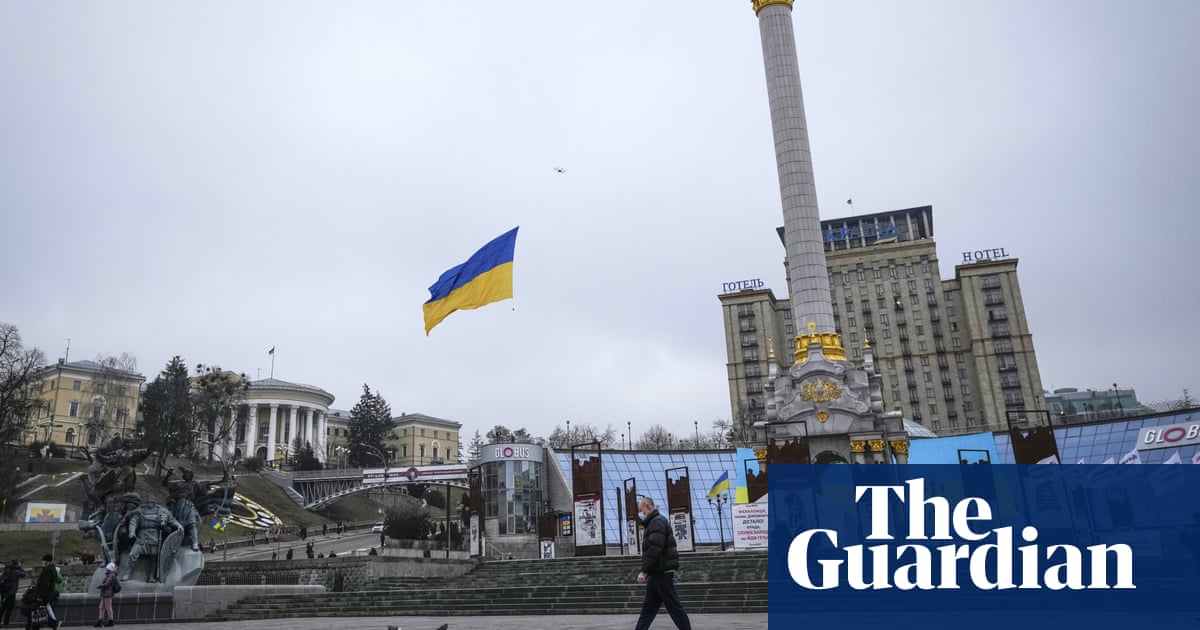Russians ridicule western media on ‘day of no invasion’ - 4 minutes read

As 16 February – the day when some briefings had forecast Russia would invade Ukraine – came and passed without incident, pundits in Moscow lined up for their chance to dunk on the western media.
“What a sad celebration we have today,” said Olga Skabeeva, the host of the state media talkshow 60 Minutes, while standing on a stage emblazoned with the logos of the Daily Mirror and the Daily Mail. “The day of no invasion of Ukraine, or perhaps as they say in Ukraine, the day when Putin once again hasn’t attacked.”
Western leaders led by Joe Biden have gone public with what they claim are Russian plans to launch an invasion of Ukraine, hoping that exposing the Kremlin’s alleged moves in advance could avert a war. But announcements of a date and, in the case of some tabloids, the exact time when Russia could launch the potential attack set up a big target for Russian officials and media to ridicule.
The Russian foreign ministry spokesperson Maria Zakharova, who enjoys prodding foreign media, wrote a “request to the mass disinformation outlets of the USA and Britain – Bloomberg, the New York Times, the Sun etc – announce the schedule of our ‘invasions’ for the coming year. I’d like to plan my vacation”.
A day earlier, she wrote: “February 15, 2022 will go down in history as the day of the failure of western war propaganda. Humiliated and destroyed without firing a shot.”
Little has changed on the ground near Ukraine’s borders, however. After the announcement of a “partial withdrawal” of Russian forces by Vladimir Putin on Tuesday, only two units have officially departed from Crimea for their home bases. Meanwhile, analysts from the Conflict Intelligence Team told the Guardian they had identified a new shipment of TOS-1A rocket artillery being unloaded at Kursk, in southern Russia.
US reports have mostly said this week marks the beginning of a window when Russia could launch an operation, rather than predicting the day it would take place.
In Russia, coverage of this buildup is less focused on the movement of tanks and Iskander missiles than on the information battle, where the main aggressors are seen as western officials and media reporting breathless predictions of all-out war or false-flag attacks.
Leaks from unnamed US officials about invasion routes or analyses of the state of the Ukrainian ground (ice or mud) have been ruthlessly mocked in Russian media. The Russian foreign ministry issued a report last week calling out foreign media, including a Guardian article about arrivals of tanks and artillery near Kursk for its “one-sided presentation” of Russia’s undeclared and largely unexplained military buildup.
It isn’t just Russia lining up to attack western media. In Ukraine, where officials have complained about disruptive leaks and over-the-top reporting, the head of President Volodymyr Zelenskiy’s Servant of the People parliamentary faction said western “hysteria is now costing the country $2-3bn every month”.
“I think that when this phase ends in two-three weeks, we should have a retrospective analysis how the main mass media have begun to disseminate information even worse than Skabeeva and [Vladimir] Solovyov [another Russian TV host],” said David Arakhamia, naming outlets such as CNN, Bloomberg and the Wall Street Journal. “We should study this because they are elements of hybrid warfare.”
The Reuters news agency set up a livestream of Kyiv’s Maidan Square, apparently to broadcast a potential attack. On Wednesday morning the feed showed light traffic on Khreshchatyk, the downtown main street, and the stop-and-go of cars at intersections. Street sounds blended into a calming white noise. More than 2,000 people were tuned in as a drone flew over the square carrying a Ukrainian flag.
As her guests laughed on, Skabeeva turned to the feed. “The livestream of Putin’s invasion was run simultaneously on Britain’s Reuters agency and the American CNN but the invasion didn’t take place,” she said.
Source: The Guardian
Powered by NewsAPI.org